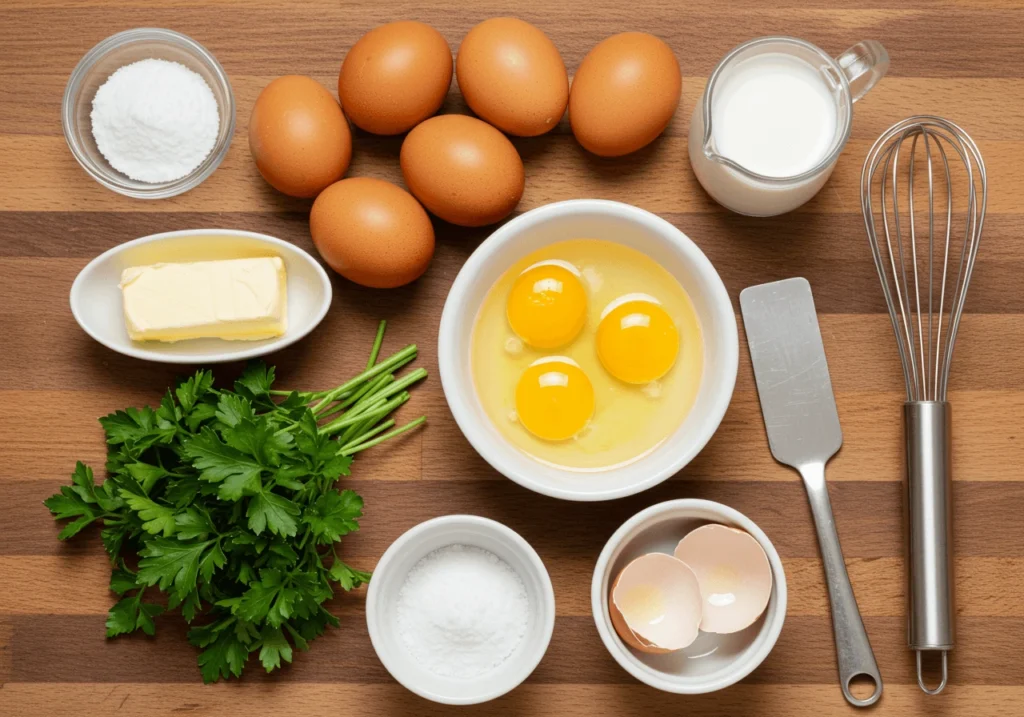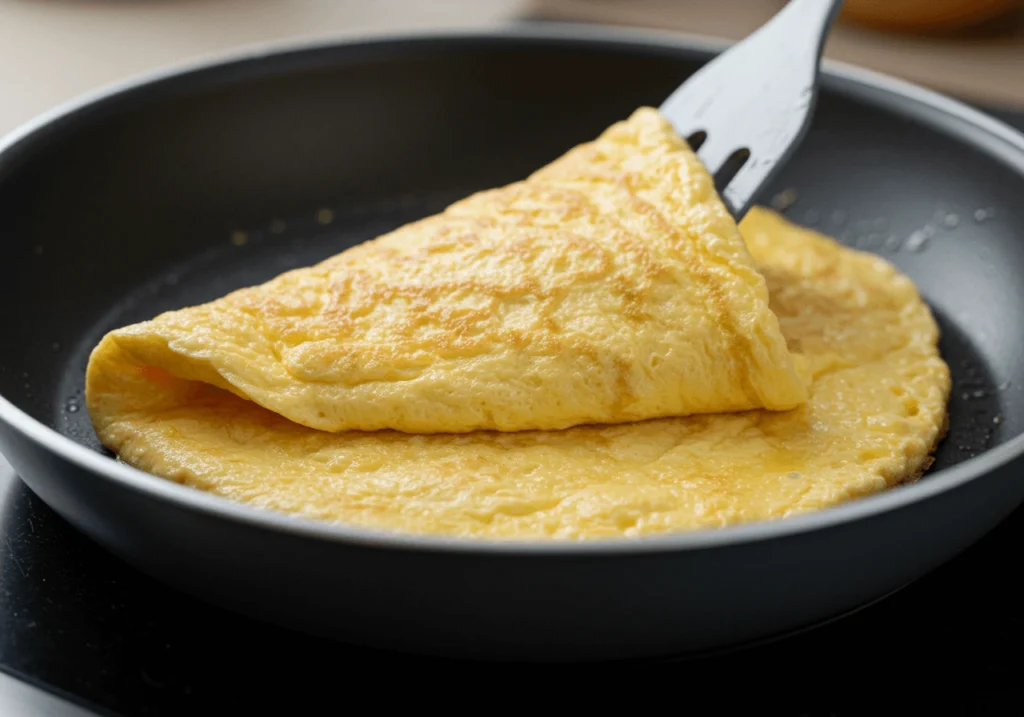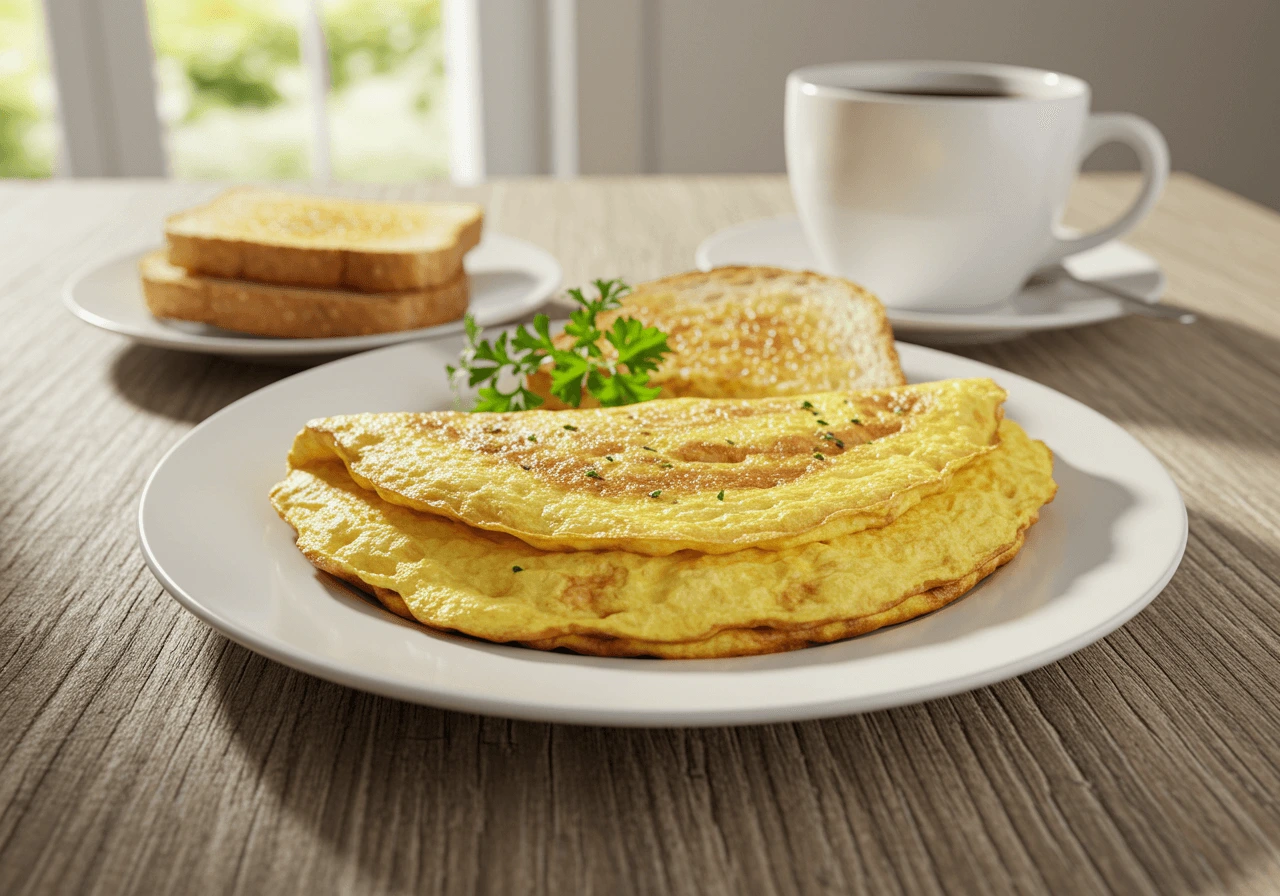The allure of a fluffy omelette lies in its light, airy texture and delicious flavor. If you’ve ever wondered how to make a fluffy omelette that melts in your mouth, you’re in for a treat. This article walks you through everything you need to know, from choosing the right ingredients to mastering the cooking process. Along the way, you’ll also learn expert tips and tricks to perfect your omelette game. Whether you’re a kitchen newbie or a seasoned cook, this guide has something for everyone.
So, let’s crack some eggs and get whisking!
Table of contents
- Introduction to Making a Fluffy Omelette
- Essential Ingredients for a Perfect Fluffy Omelette
- Tools and Equipment Needed
- Preparing the Ingredients of a Fluffy Omelette
- Step-by-Step Cooking a Fluffy Omelette
- Common Variations of Fluffy Omelettes
- Troubleshooting and Expert Tips
- FAQs: Everything You Need to Know About Fluffy Omelettes
- Nutritional and Dietary Considerations
- Conclusion and Final Thoughts
Introduction to Making a Fluffy Omelette
What Makes a Fluffy Omelette?
A fluffy omelette isn’t your typical scrambled eggs folded over. It’s a masterpiece of culinary simplicity that depends on technique more than ingredients. The hallmark of a fluffy omelette is its pillowy texture, achieved through proper whisking and gentle cooking. By incorporating air into the eggs, you create a dish that feels as light as a cloud.
Benefits of Learning the Art of Fluffy Omelettes
Why bother learning how to make a fluffy omelette? For one, it elevates your breakfast game. A well-made fluffy omelette can turn an ordinary morning into something special. Plus, it’s a versatile dish you can customize with endless fillings, from cheese and herbs to veggies and ham. Once you master the technique, you’ll never go back to dense, rubbery omelettes again.
Overview of Key Techniques and Ingredients
To make the perfect fluffy omelette, you’ll need just a few simple ingredients: fresh eggs, a touch of butter, and perhaps a splash of milk or water. But the magic happens with the technique—beating the egg whites to perfection, cooking on low heat, and folding the omelette with care. In the sections ahead, we’ll break these steps down in detail so you can achieve omelette perfection every single time.
Essential Ingredients for a Perfect Fluffy Omelette
The foundation of how to make a fluffy omelette lies in the choice and preparation of ingredients. Each ingredient plays a key role in ensuring the omelette is light, airy, and flavorful. Let’s take a closer look at what you need and why.
Choosing the Right Eggs
Eggs are the star of the show, so their quality matters. Fresh, large eggs are ideal for fluffy omelettes because they whip up better and produce a smoother texture. In addition, organic or free-range eggs often have richer yolks, which can enhance the flavor. Always check for freshness by placing the eggs in a bowl of water; fresh eggs will sink, while older ones float.
Importance of Fresh Ingredients
In addition to eggs, the other ingredients you use can also affect the outcome. For instance, fresh butter melts more evenly, creating the perfect non-stick layer for your omelette. Moreover, any fillings, such as cheese, herbs, or vegetables, should be as fresh as possible to enhance both taste and texture. Using stale or dry ingredients can weigh down your fluffy omelette, making it less airy.
Optional Add-Ins for Flavor and Texture
While the classic fluffy omelette is often served plain, you can customize it to suit your taste. Popular add-ins include grated cheese, fresh herbs like chives or parsley, and finely chopped vegetables. On the other hand, if you prefer a protein-packed meal, consider adding cooked ham or smoked salmon. However, avoid overloading the omelette, as too many fillings can compromise its fluffiness.
Internal Linking Opportunity: Check out the Cubano Omelette Recipe on Temporecipes for a delicious twist on classic omelette flavors.
Tools and Equipment Needed
Understanding the tools required for how to make a fluffy omelette is just as important as selecting the right ingredients. Having the proper equipment ensures that your cooking process is seamless and that your omelette cooks to perfection.
Best Pan for Cooking a Fluffy Omelette
The choice of pan is crucial. A non-stick skillet or an omelette pan is highly recommended for this task. A pan with a diameter of 8–10 inches is perfect for an individual serving. Non-stick pans prevent the omelette from sticking, allowing for an easy flip and a smooth texture. Additionally, a well-balanced pan distributes heat evenly, preventing hot spots that could burn your omelette.
Whisks, Spatulas, and Bowls: Must-Have Tools
A good-quality whisk is essential for whipping air into your egg whites. Look for a balloon whisk, which is designed to incorporate more air efficiently. You’ll also need a rubber or silicone spatula to fold the omelette gently without tearing it. For mixing, opt for glass or metal bowls, as they are easier to clean and help maintain the integrity of your ingredients.
Tips for Preparing Your Workspace
Before you start cooking, ensure your workspace is organized. This includes having all your ingredients measured and tools within reach. A clutter-free space allows you to focus entirely on the cooking process. In addition, having a damp cloth under your mixing bowl can prevent it from slipping as you whisk your eggs.
Internal Linking Opportunity: If you’re exploring different omelette styles, consider reading about What Is a Swiss Omelette to expand your culinary knowledge.
Preparing the Ingredients of a Fluffy Omelette
The secret to how to make a fluffy omelette lies in proper ingredient preparation. This step ensures that your omelette is light, airy, and evenly cooked. Let’s explore the essential steps to get your ingredients ready.

How to Separate Eggs for a Fluffy Omelette
Separating egg whites from yolks is one of the most important steps for achieving a fluffy omelette. Begin by cracking the eggs gently on a flat surface. Then, over a clean bowl, transfer the yolk back and forth between the shell halves, allowing the white to drip into the bowl below. Be careful not to let any yolk mix with the whites, as even a small amount of yolk can prevent the whites from whipping properly.
Beating Egg Whites to Stiff Peaks
Whipping the egg whites is crucial for incorporating air into your omelette. Use a clean whisk or an electric mixer for this step. Beat the whites until stiff peaks form, meaning they hold their shape when you lift the whisk. However, don’t overbeat, as this can make the whites collapse. Adding a pinch of salt during whipping can stabilize the mixture.
Mixing Yolks with Milk, Cream, or Water
The yolks contribute to the flavor and richness of your omelette. Whisk them with a tablespoon of milk, cream, or water for every two eggs. Milk and cream add a creamy texture, while water makes the omelette lighter. However, avoid overmixing, as it can break down the structure of the yolks.
Combining the Whites and Yolks
Once the whites are whipped and the yolks are ready, gently fold them together. Use a spatula to fold the mixtures in a circular motion, ensuring you don’t deflate the whites. This step combines the ingredients without losing the airiness needed for a fluffy texture.
For more egg-based recipes, check out our site’s wide range of breakfast ideas.
Step-by-Step Cooking a Fluffy Omelette
Mastering how to make a fluffy omelette involves carefully executing each step of the cooking process. From heating the pan to flipping the omelette, every detail matters.

Preheating the Pan and Adding Butter
Start by heating your pan over medium heat. It’s important to avoid overheating, as this can burn the butter. Once the pan is warm, add a tablespoon of butter and let it melt evenly. Tilt the pan to coat the surface, creating a non-stick layer. This step ensures that the omelette doesn’t stick and cooks uniformly.
Pouring and Spreading the Egg Mixture
After the butter has melted, pour the egg mixture into the pan. Use a spatula to spread it gently so that it covers the surface evenly. This ensures the omelette cooks at the same rate throughout. However, don’t stir the eggs after pouring, as this can disrupt the airy texture.
Controlling Heat for Even Cooking
Cooking the omelette on low to medium heat is key. High heat can cause the bottom to cook too quickly while leaving the top undercooked. Cover the pan with a lid to trap steam, which helps the omelette cook evenly and enhances its fluffiness.
Folding and Flipping Techniques
When the omelette is nearly set, use a spatula to loosen the edges gently. Fold it in half by lifting one side and carefully flipping it over the other. For an extra fluffy texture, you can fold it again into thirds. However, be gentle to avoid pressing out the air.
Tips for Avoiding Overcooking
It’s easy to overcook an omelette, which can make it dry and rubbery. Remove the pan from heat as soon as the omelette is set but still slightly soft on top. The residual heat will continue cooking it, ensuring a perfect texture.
For additional breakfast inspiration, visit Temporecipes and explore their egg-based recipes.
Common Variations of Fluffy Omelettes
When learning how to make a fluffy omelette, exploring different variations can add excitement to your breakfast routine. These styles showcase how small changes in technique or ingredients can lead to unique results.
French Omelette: Minimalist and Elegant
The French omelette is known for its smooth, tender texture and subtle flavor. Unlike traditional fluffy omelettes, it’s cooked slowly over low heat without whipping the eggs. Instead, the eggs are stirred continuously in the pan, creating a creamy consistency. While it’s not as airy as a soufflé-style omelette, its elegance lies in its simplicity. For a classic French version, add fresh herbs like chives or parsley.
Soufflé Omelette: Ultimate Airiness
If you want maximum fluffiness, the soufflé omelette is a must-try. This variation relies on separating the eggs and whipping the whites to stiff peaks, much like the method described earlier. However, it’s cooked in the oven instead of on the stove. The result is a tall, golden-brown omelette with a delicate texture. It’s perfect for a special occasion or a brunch menu.
Cheese-Stuffed Omelettes: A Rich Variation
For those who enjoy a hearty breakfast, a cheese-stuffed omelette is an excellent choice. After pouring the egg mixture into the pan, sprinkle shredded cheese over half the omelette before folding it. Cheddar, mozzarella, or goat cheese all work well. The melted cheese adds a creamy richness that balances the lightness of the eggs. However, be careful not to overfill, as this can weigh down your omelette.
If you’re looking for other creative ideas, check out our guide to unique omelette recipes on Temporecipes.
Troubleshooting and Expert Tips
Even when you know how to make a fluffy omelette, things don’t always go as planned. Here are solutions to common issues and expert tips to help you perfect your technique.
Why Did My Omelette Fall Flat?
A flat omelette often means the egg whites weren’t whipped enough. Ensure they are beaten to stiff peaks, as this step incorporates air, which creates the fluffiness. Additionally, folding the whites into the yolks too roughly can deflate the mixture. Therefore, always fold gently to preserve the airy texture.
Fixing Overcooked or Burnt Omelettes
Overcooking is a common mistake that can result in a rubbery or burnt omelette. To avoid this, cook on low to medium heat and monitor it closely. On the other hand, using a non-stick pan and butter can help prevent the omelette from sticking and burning. If you accidentally overcook it, consider serving it with a flavorful sauce to mask the dryness.
Advanced Tricks for Fluffy Perfection
For even fluffier omelettes, try adding a pinch of baking powder to the egg mixture. This can enhance the rise without altering the taste. Additionally, using clarified butter instead of regular butter can improve browning while reducing the risk of burning. Finally, covering the pan during cooking traps steam, which helps cook the omelette evenly and keeps it moist.
For more troubleshooting tips, visit our expert cooking advice section on Temporecipes.
FAQs: Everything You Need to Know About Fluffy Omelettes
When learning how to make a fluffy omelette, questions often arise about the best techniques and ingredients. Here, we answer the most common queries to help you succeed.
Can I Make a Fluffy Omelette Without Separating Eggs?
Yes, you can make a fluffy omelette without separating the eggs, but the texture may not be as light. To achieve some airiness, whisk the whole eggs vigorously for several minutes until they are frothy. However, separating the whites and whipping them to stiff peaks is still the best method for maximum fluffiness. Therefore, if time allows, it’s worth the extra step.
Is Milk or Water Better for Omelettes?
Both milk and water can work well, depending on your preference. Milk adds creaminess and richness to the omelette, while water makes it lighter. However, using too much liquid can make the omelette runny or difficult to cook evenly. For best results, add no more than a tablespoon of liquid per two eggs.
What Are the Best Fillings for a Fluffy Omelette?
The best fillings are those that complement the delicate texture of the omelette. For instance, shredded cheese, sautéed vegetables, and fresh herbs work well. On the other hand, heavy or wet fillings like chunky salsa can weigh down the omelette. Therefore, keep the fillings simple and avoid overloading.
How Do I Reheat a Fluffy Omelette Without Losing Texture?
To reheat a fluffy omelette, use a low-heat setting on the stovetop or microwave. However, it’s important to avoid overheating, as this can dry it out. Covering the omelette with a damp paper towel when microwaving helps retain moisture. Therefore, reheating gently is key to preserving its airy texture.
Nutritional and Dietary Considerations
When exploring how to make a fluffy omelette, it’s essential to understand its nutritional value. Knowing the nutritional breakdown can help you make informed choices that align with your dietary goals.
Calories and Protein Content in Fluffy Omelettes
A fluffy omelette is not only delicious but also provides a good balance of calories and protein. Therefore, it makes an excellent breakfast option, especially for those seeking a high-protein meal. For more precise details, let’s break down the nutritional content.
Nutritional Content (Per 100g)
Below is the nutritional information for a basic fluffy omelette made with eggs, milk, and butter. Additional fillings like cheese or vegetables will change these values slightly.
| Nutrient | Amount (Per 100g) |
|---|---|
| Calories | 154 kcal |
| Protein | 10.6 g |
| Fat | 11.2 g |
| Carbohydrates | 1.1 g |
| Saturated Fat | 4.0 g |
| Cholesterol | 372 mg |
| Sodium | 144 mg |
| Vitamin A | 350 IU |
| Calcium | 55 mg |
| Iron | 1.2 mg |
This nutritional content serves as a general guide for a basic fluffy omelette. However, if you add ingredients like cheese, vegetables, or meats, the values will vary. Therefore, feel free to adjust according to your preferences and nutritional needs.
Conclusion and Final Thoughts
As you’ve seen, mastering how to make a fluffy omelette is not as complicated as it might seem. With the right ingredients, tools, and techniques, you can create a dish that is both light and delicious. To wrap up, let’s review the key tips and encourage you to experiment.
Recap of Key Tips and Techniques
To make the perfect fluffy omelette, always start with fresh eggs and separate the whites from the yolks. Whip the whites until they form stiff peaks, as this step ensures the lightness of your omelette. Furthermore, folding the egg whites gently into the yolks helps maintain the airy texture.
Cooking at low to medium heat and using butter or a non-stick pan are equally important. However, avoid overloading the omelette with heavy fillings, as they can weigh it down. Instead, opt for light and flavorful add-ins like cheese, herbs, or vegetables. These small details, therefore, make all the difference.
Encouragement to Experiment and Customize
Now that you know how to make a fluffy omelette, don’t be afraid to experiment. Try different fillings, such as smoked salmon, sautéed spinach, or goat cheese, to make the dish your own. On the other hand, if you prefer a simpler approach, a plain omelette is always satisfying.
Remember, cooking is a journey, and each attempt brings you closer to perfection. Therefore, enjoy the process, and don’t be discouraged by small setbacks. With practice, you’ll be creating fluffy omelettes that rival those from the finest chefs.
Final Words on Mastering Fluffy Omelettes
In conclusion, learning how to make a fluffy omelette is a skill that elevates your breakfast game. It’s a dish that’s versatile, nutritious, and sure to impress. So, gather your ingredients, follow these tips, and enjoy the satisfaction of creating something truly special. Bon appétit!

